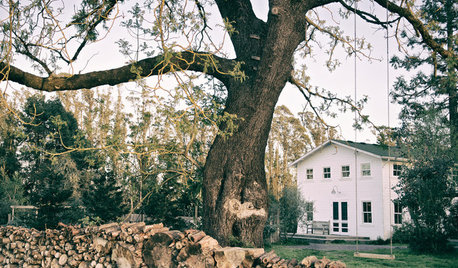CT Has ID'd Blight in NH County
gumby_ct
11 years ago
Related Stories

REMODELING GUIDESOne Guy Found a $175,000 Comic in His Wall. What Has Your Home Hidden?
Have you found a treasure, large or small, when remodeling your house? We want to see it!
Full Story
CONCRETEWhy Concrete Wants to Crack
We look at the reasons concrete has a tendency to crack — and what you can do to help control it
Full Story
KITCHEN DESIGNKitchen of the Week: Chestnut and an Open Fire in Connecticut
Antique chestnut boards give a kitchen with a wood-burning oven vintage flair, balancing its modern amenities
Full Story
GARDENING FOR BUTTERFLIESBe a Butterfly Savior — Garden for the Monarchs
Keep hope, beauty and kindness alive in the landscape by providing a refuge for these threatened enchanters
Full Story
HOUZZ TV FAVORITESHouzz TV: See How Early Settlers Lived in This Restored Pilgrim House
Passionate restoration and preservation efforts give a 1665 home an honored place in the present
Full Story
BEDROOMS9 Beautiful Bedroom Views Shared by Houzzers
See great vistas throughout the U.S. and Canada, with stories and details from the homeowners
Full Story
HOUZZ TOURSHouzz Tour: Picture-Perfect Simplicity
It’s like camping out in a catalog sometimes at this classic farmhouse — Pottery Barn and other retailers love it for photo shoots
Full Story
HOUZZ TOURSMy Houzz: A Classic Midcentury Home Wrapped in Windows
A couple's 4-year restoration and renovation results in a bright look for their wood-paneled house in New York
Full Story
MY HOUZZMy Houzz: Global Details Add Character to a Connecticut Farmhouse
Lush textiles and gorgeous antiques warm up this classic 1745 East Coast home
Full Story
WINTER GARDENINGCalifornia Gardener's January Checklist
Winter-defying blooms and pruning saws earn a cheer, while California-focused gardening design books get a well-deserved shout-out
Full StoryMore Discussions






missingtheobvious
gumby_ctOriginal Author
Related Professionals
East Lake-Orient Park Landscape Contractors · Holland Landscape Contractors · Northport Landscape Contractors · Overland Park Landscape Contractors · Placerville Landscape Contractors · Pompano Beach Landscape Contractors · Woodburn Landscape Contractors · Four Corners General Contractors · Dardenne Prairie General Contractors · Saint George General Contractors · Valle Vista General Contractors · Markham Decks, Patios & Outdoor Enclosures · Miami Decks, Patios & Outdoor Enclosures · Olathe Decks, Patios & Outdoor Enclosures · Statesville Decks, Patios & Outdoor Enclosuresmissingtheobvious
fusion_power
carolyn137
John A
2ajsmama
carolyn137
macbettz
gumby_ctOriginal Author
carolyn137
fusion_power
lionheart_gw (USDA Zone 5A, Eastern NY)
2ajsmama
lionheart_gw (USDA Zone 5A, Eastern NY)
2ajsmama
carolyn137
lionheart_gw (USDA Zone 5A, Eastern NY)
2ajsmama
2ajsmama
lionheart_gw (USDA Zone 5A, Eastern NY)
2ajsmama
2ajsmama
gumby_ctOriginal Author